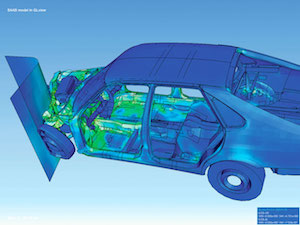Tools
Adherend Innovations uses Abaqus/CAE from Dassault Systems for all FEA work. Abaqus maintains industry-leading composites modeling capability, used extensively by Boeing on projects including the 787 Dreamliner. Abaqus is also know for a robust explicit solver, preferred by companies like Apple to simulate highly dynamic events such as the fall of an iPad from a desk. Predictable and accurate FEA is critical to maximizing product performance and reducing development lifecycle. Multi-core simulations can be run in-house to reduce runtime and increase the number of design of experiments for the ultimate in optimized designs.
Computer Aided Design (CAD) allows faster iteration, easier technical communication, more complex designs, and the ability to go straight to manufacturing using computer numerically controlled (CNC) machines. Modern CAD packages have immense capability for modeling 3D shapes with complex surfaces. Product lifecycle managers (PLM) packages allow engineers to more easily contribute to and manage massive assemblies. For design projects, Siemens NX was chosen due to powerful parametric and asynchronous modeling techniques. NX provides the ultimate in design freedom and stability. Parasolids and other neutral format CAD files can be used to interact with other FEA and CAD packages.
We can also can also assist in the physical testing of material coupons, components, or product assemblies. Depending on your testing needs, we are able to identify the most capable facility having worked with a number of test houses over the years. Whether the project requires ASTM standard methods or custom design fixtures and protocols, we can assist in the execution of environmental, static, dynamic, or fatigue testing to validate your product. While modern CAD and FEA packages can produce complex designs with predictable behavior, testing is a critical component of the product design process. In some industries, aerospace for example, physical testing is the only method to legally certify a product for sale.


